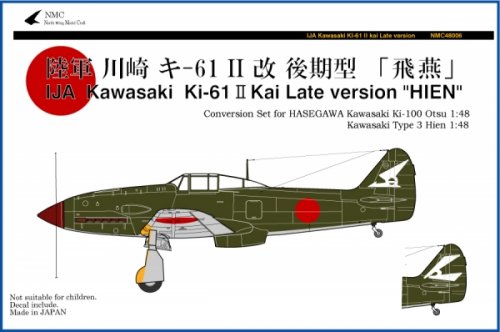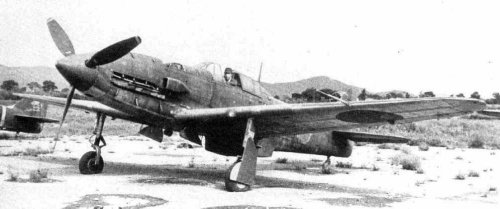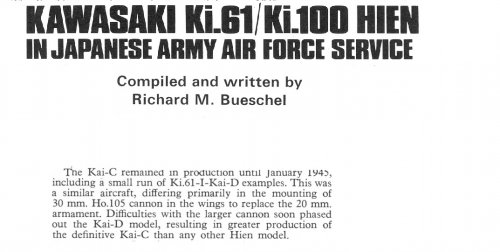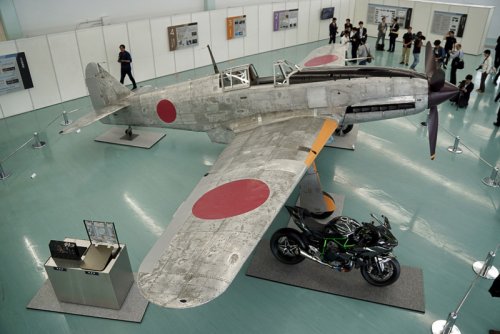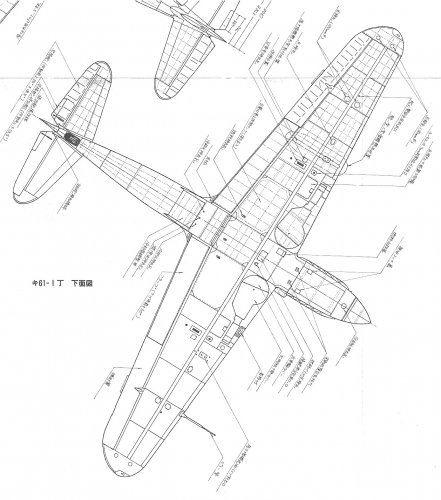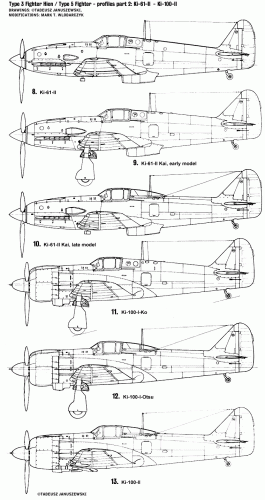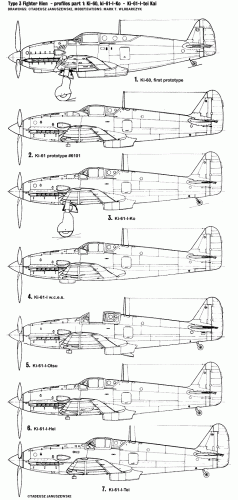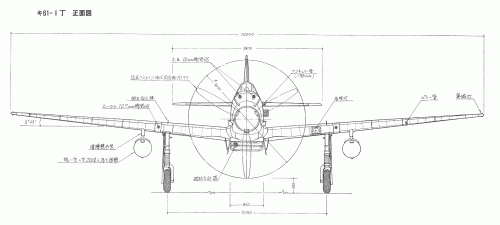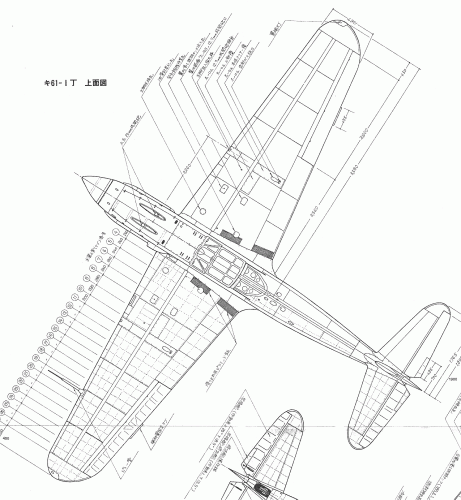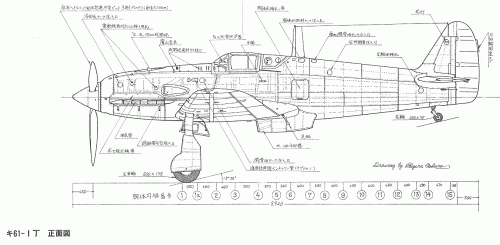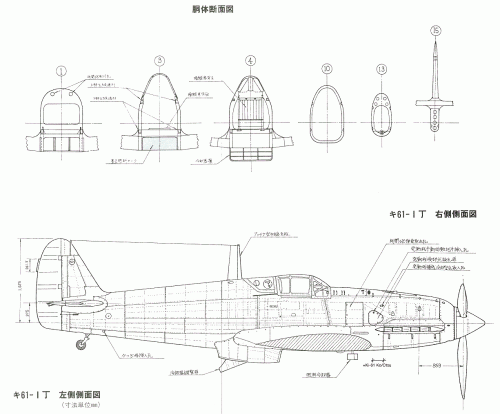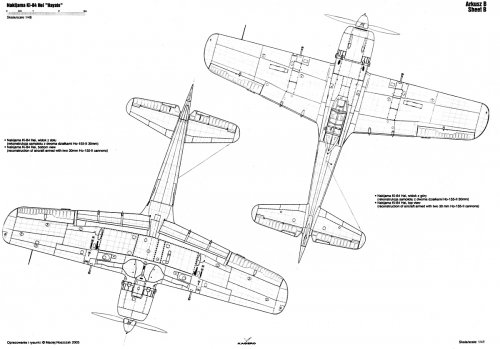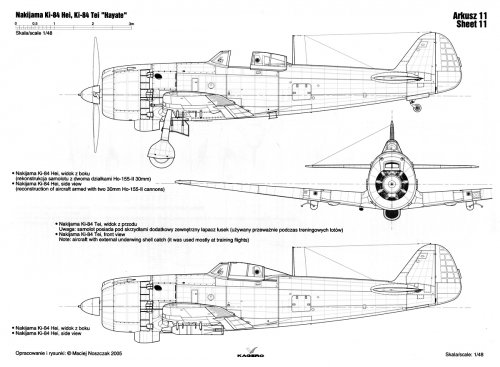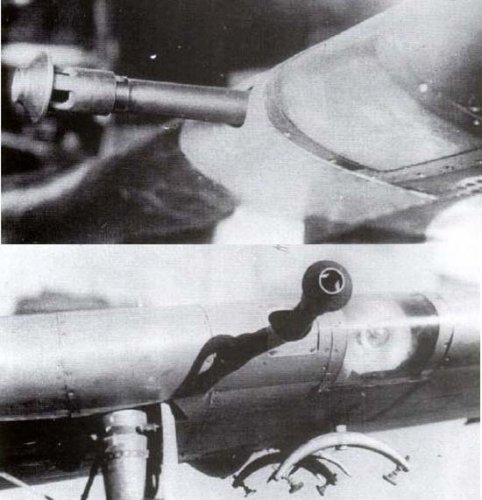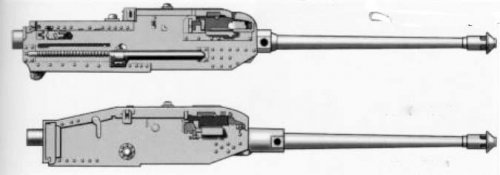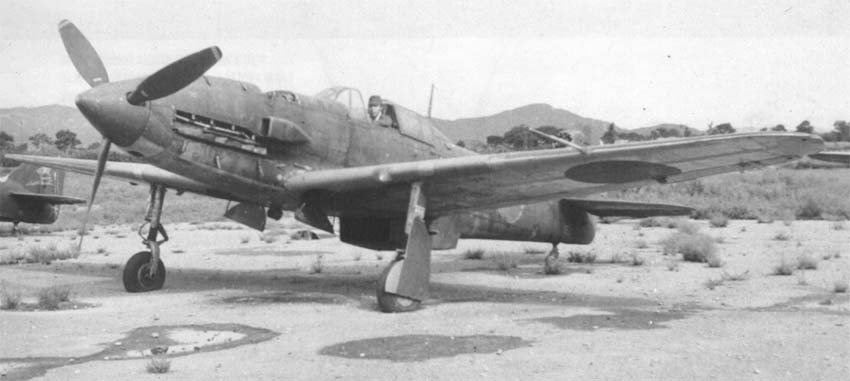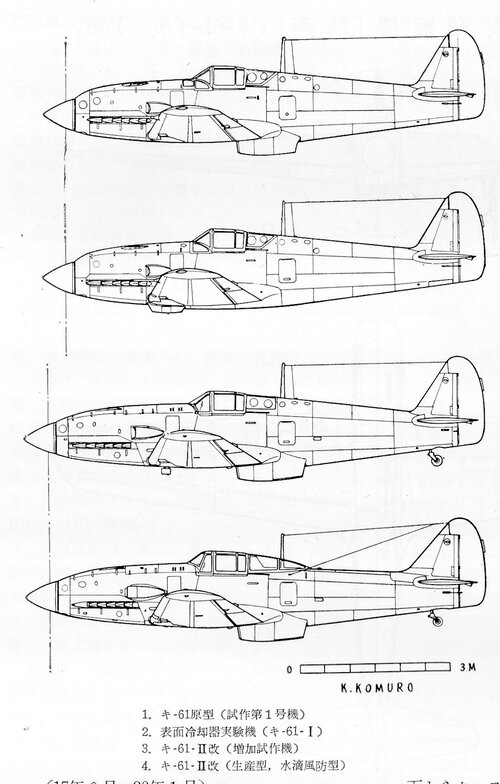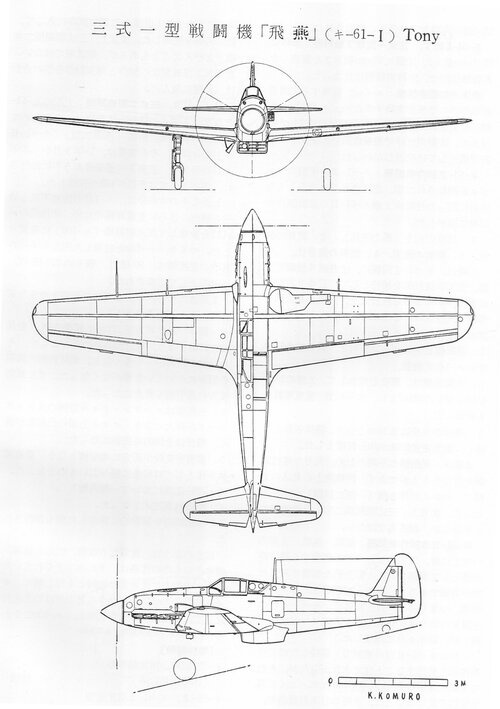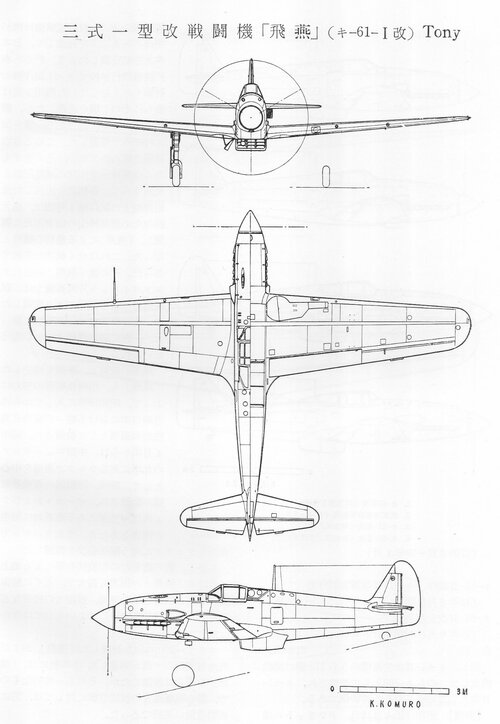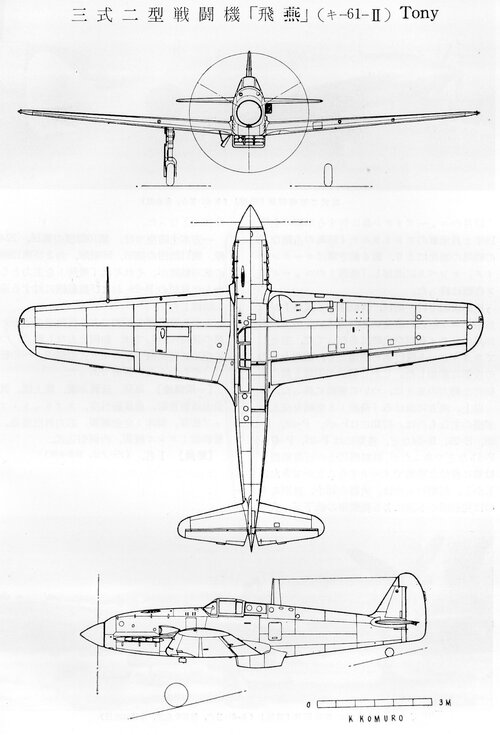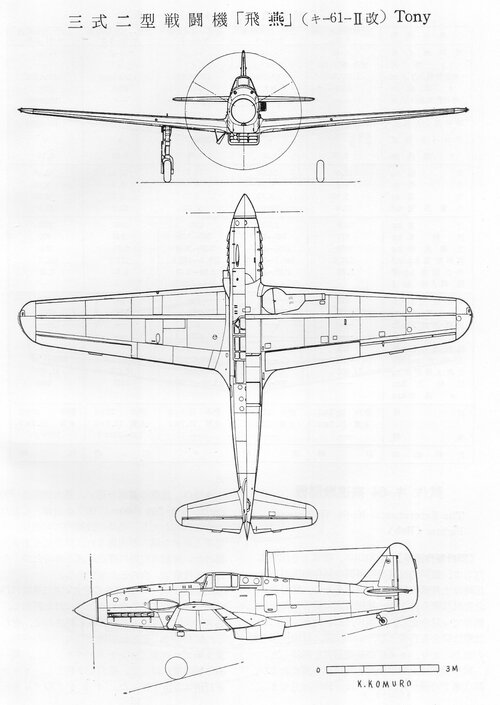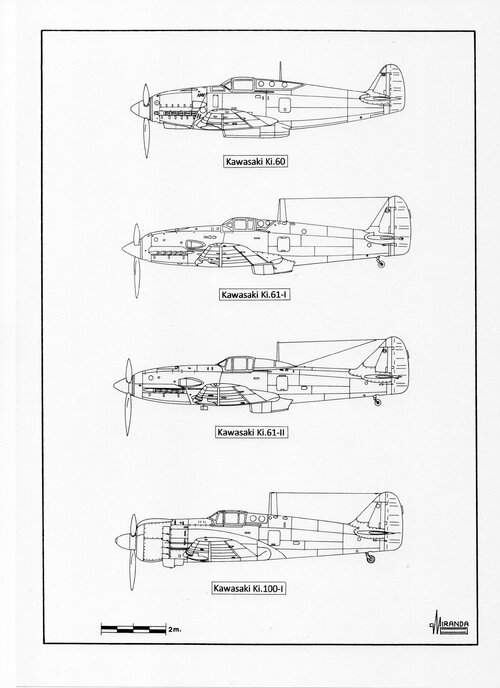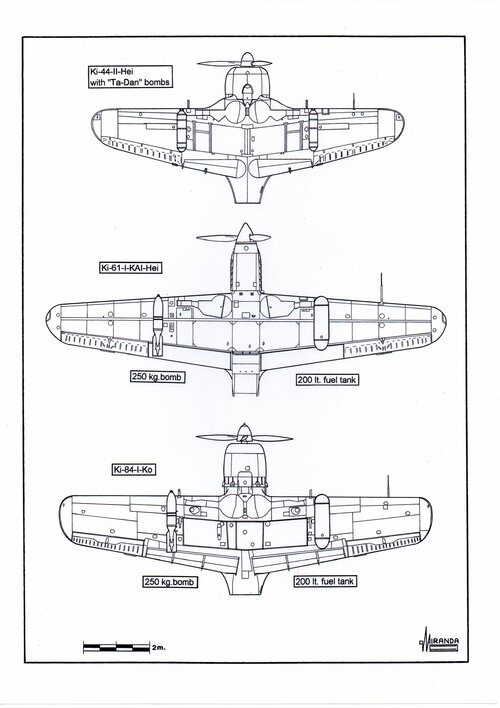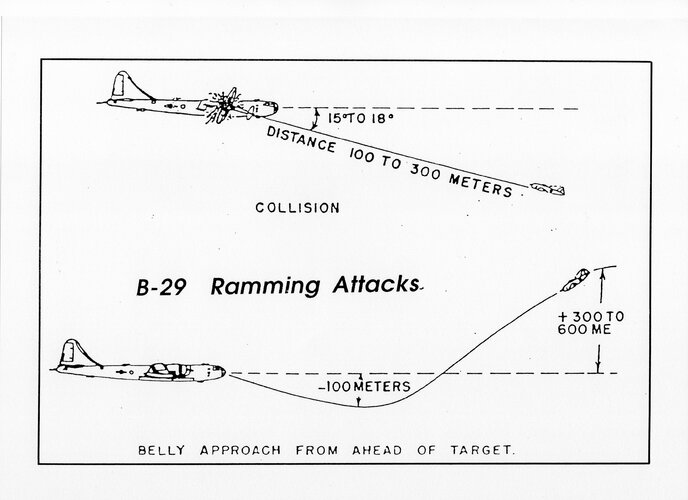- Japan acquired the manufacturing license of the German Daimler-Benz DB 601 engine in 1938. In 1940 the IJA assigned the production to the Akashi plant of the Kawasaki firm, under the name Ha-40. The engine was to be used to propel the Ki.60 and Ki.61 future fighters as well as a fast bomber commissioned by the IJN to Yokosuka.
The Ki.60 was built by the standards of the new fighters used in Europe, but it was not satisfactory to the Japanese pilots due to its low manoeuvrability, excessive wing load and high landing speed. These features were removed from the next design Ki.61, including many aerodynamic solutions already tested in the Heinkel He 100, as well as a larger wing surface and a lighter armament of four machine guns.
The Ki.61 began operations with the 68th and 78th Sentais in New Guinea, in May 1944. The tropical climate and poor maintenance conditions affected the delicate engines and the general availability of the aircraft. Many were immobilized on the ground and destroyed by the strafing attacks of the American P-38s. The Tony proved to be superior to the P-39s and P-40s in air combat, although these airplanes were difficult to shoot down using machine guns only, due to its robust airframe, armoured cockpit and self-sealing fuel tanks.
Even more difficult was fighting strongly armed heavy bombers B-17s and B-24s, leading to the IJA to order the construction of the Ki.61-I-Otsu version, equipped with 20 mm cannons and two droppable fuel tanks of 200 litres or two bombs of 250 kg hanging under the wings. The IJA had no access to the Oerlikon cannons used by the IJN Zeros and was forced to buy 800 Mauser MG 151 cannons of 20 mm to Germany that were carried by submarine to Japan in August 1943. The special ammunition for the MG 151 was also imported and could not be renewed.
At the end of the year the Ho-5 cannon built in Japan was already available. Its installation on the wings of the new Ki.61-I-KAI-Hei fighters started immediately, but the weapons proved insufficient against the B-29 bombers. Some aircraft of this series were experimentally provided with Ho-155 cannons of 30 mm that proved too heavy to quickly reach the altitude of the enemy planes.
Despite the encountered difficulties, the Ki.61 achieved some successes. On December 3, 1944, the B-29 42-24656 was shot down over Tokyo by a Tony of the 244th Sentai piloted by Cap. Teruhiko Kobayashi. On January 3, 1945, a B-29 of the 73rd BW was shot down over Nagoya by an airplane of the 55th Sentai piloted by 2Lt. Takeo Adachi. On the 23rd, the 42-24785 of the 882nd BS was destroyed over the Mitsubishi-Hamamatsu factory by a Ki.61. On the 27th, during a raid on the Nakajima-Tokyo factory, the ‘Haley's Comet’ 42-24616 and ‘Shady Lady’ 42-24619 were shot down by two Tonys of the 244th Sentai piloted by Cap. Teruhiko Kobayashi and Sgt. Chuichi Ichikawa.
On March 13, the 42-24754 of the 878th BS was shot down by the Ki.61 of the W.O. Tadao Sumi, of the 56th Sentai over Osaka. On November 7, 1944, the IJA ordered the formation of Tai-Atari units, specialized in ramming attacks, within each Sentai of air defence. The Ki.61-I-KAI-Hei of the 56th and 244th Sentais were stripped of armament and all possible weight for its use as rammers.
On December 3, 1944, the bombers of the 498th BG carried out a new raid against the Nakajima-Tokyo manufacturing plant. During the attack, the B-29 42-24680 was rammed by the Ki.61 of Lt. Toru Shinomiya and the 42-24735 by the airplane of Cpl Matsumi Nakano, both of the 244th Sentai. However, the ‘Long Distance’ 42-24544 could make it to base, although badly damaged, after being rammed on engine No. 3 by a Ki.61-I-Hei, also of the 244th Sentai, piloted by Cpl Masao Itagaki.
On the 27th of the same month, the B-29 ‘Uncle Tom's Cabin no. 2’ of the 498th BG was rammed over Tokyo by an airplane of the 244th Sentai piloted by Takeo Yoshida. On January 3, another two bombers of the 871st BS were rammed by Tonys over Nagoya, the ‘Joker's Wild’ 42-24626 by an airplane of the 56th Sentai, piloted by Toshio Wakui, and ‘The Leading Lady’ 42-24766 by a fighter of the 55th Sentai, flown by Minoru Shirota. On the 9th of the same month, the 42-24655, a B-29 of the 871st BS, was rammed over Tokyo by a Ki.61 of the 56th Sentai piloted by Toshiro Wakui. On December 27 and in the same area, ‘The Jumping Stud’ 42-24767 was rammed by the plane of Shirobe Tanaka and the ’Ghastly Goose’ 42-63541 by Ando Kiyoshi, both of the 244th Sentai.
On February 19, during a new raid conducted by the 882nd BS over Tokyo, the B-29 42-63494 was rammed by a Ki.61 over Sendagaya Shiboya-Ku. On March 16, a Tony of the 56th Sentai, piloted by Juichi Ogata, rammed the B-29 42-24849 of the 500th BG. On April 7, the 883rd BS again attacked the Nakajima-Tokyo factory, losing the ‘Adam's Eve’ 42-24600 and the ‘Mrs. Tittymouse’ 42-65212 after being rammed by two Ki.61s of the 244th Sentai piloted by Takashi Kawano and Satohide Kohatsu.
On June 26, the B-29 44-69873, 42-24769, 42-24616, 42-63423, 42-63501 and 42-24682 were shot down over Osaka by ramming attacks by Ki.61 airplanes of the 56th Sentai piloted by Sgt. Yukata Nakagawa, Cap. Teruhiko Kobayashi, 2Lt. Shoichi Takayama, 2Lt. Katsuki Hattori, Sgt. Masao Itagaki and Sgt. Matsuyoshi Nakano.
From autumn 1944, ten Sentais equipped with the Hei version participated in the Battle of Philippines performing escort missions to the kamikaze groups, as well as fighter and bomber attacks and US air base strafing. All aircraft and most of the pilots were lost against the air superiority of the enemy.
Sentais 1st, 17th, 59th and 105th were rebuilt in southern Japan returning to fight in Okinawa, where the Tonys acted as escort fighters with two droppable fuel tanks of 200 litres. From March 1945 they began to carry out Tokko missions equipped with one Type 99, No. 25, Model I bomb of 248.7 kg suspended under the starboard wing and a fuel tank under the port wing. On April 3, two Ki.61 of the 105th Sentai severely damaged the landing craft LST-599 in a suicide attack to the SW of Cape Zampa. Three days later, the destroyer USS Emmons (DMS-22) was sunk off Okinawa by two Ki.61s of an unknown Tokko unit.
On May 1, the British carrier HMS Victorious was damaged by two suicide Ki.61s of the 23rd Independent Chutai off Kadena. Two days later, the destroyer USS Luce (DD-522) was sunk after an attack by two Ki.61s of the 17th Sentai off Kerama Retto. On the next day, the escort carrier USS Shangamon (CVE-26) was rammed by a Ki.61 of the 105th Sentai off Kerama Retto and the landing craft LSM (R) -190 by another Tony of the 19th Sentai to the south of Miyako Jima.
Between March 26 and June 11, 1945, no fewer than 106 Tonys made Tokko attacks against Allied ships in Okinawa, Kadena, Naha, Kerama, Miyako-Jima, Cape Zampa, Nakagusuku Bay and Taiwan. They came from the Akeno and Hitachi Flying Schools, from training units of the 4th and 5th Army Air Forces and from the 17th, 19th, 59th and 105th Sentais. They were organized into suicidal units Shinbu Nos. 54, 55, 56, 110, 149, 159 and 160 and into the 23rd Independent Chutai.
The numerous problems experienced with the Ha-40 engine were due mainly to the weak construction of the cylinder block, improperly designed to make it lighter than the heavy Daimler-Benz. Failures also occurred in the operation due to dust and sand from the landing strips and from the poor maintenance conditions in tropical climates. The engineers redesigned the engine as Ha-140 that was somewhat more reliable, being used to propel the Ki.61-II-KAI from April 1944. Despite its excellent performance in tests, only 374 airframes were made and when the Akashi factory was destroyed in a bombing on January 19, only 99 Ha-140s were completed, just enough to equip four Sentais.
The situation forced the Kawasaki engineers to consider installing a new Mitsubishi Type 4 Ha-112-II radial engine of 1,500 hp. To achieve its integration into the airframe of a Tony, they conducted a study of the only Focke Wulf Fw190 fighter existing in Japan to analyse how the Germans had solved the problem. Surprisingly and as happened with the Mustang, changing the engine produced an excellent fighter with greater manoeuvrability and climb rate that was also easier to maintain. Named Ki.100-I Type 5, it was used by six Sentais of elite, fighting on equal terms against Hellcats and Corsairs in Okinawa and against Mustangs over Japan.
The best combat altitude for Type 5 was 6,000 m but it was almost useless against the Superfortress at 9,000 m. Some aircraft of the 111th Sentai, assigned to the defence of Osaka, removed the machine guns to save weight, but the head-on attacks carried only with two guns of 20 mm were not destructive enough to achieve results against a B-29 and some aircraft of the Sentai were experimentally fitted with air-to-air Ro.San Dan rockets of 10 cm.
During the night from April 14 to 15, 1945, the B-29s of the 313rd and 314th BW conducted a medium altitude attack against the Kawasaki factory losing eleven aircraft (42-24821, 42-63545, 42-93893, 42-93962 , 42-94034, 44-69673, 44-69834, 44-69871, 44-69882, 44-69907 and 42-24664) one of them rammed by a Ki.100 of the 244th Sentai piloted by Cpt. Chuichi Ichikawa.


